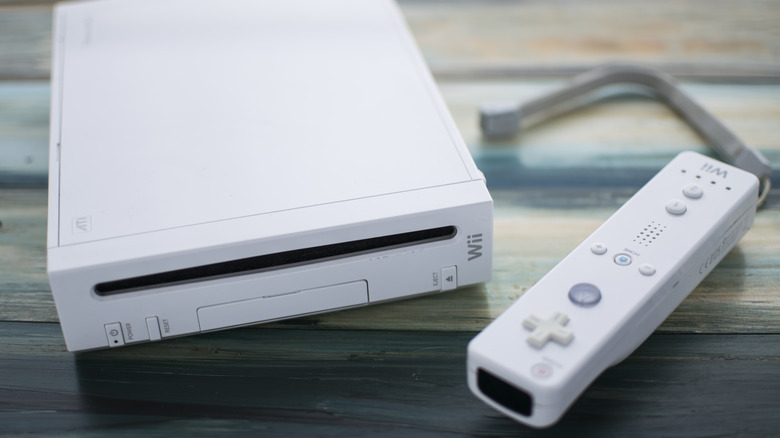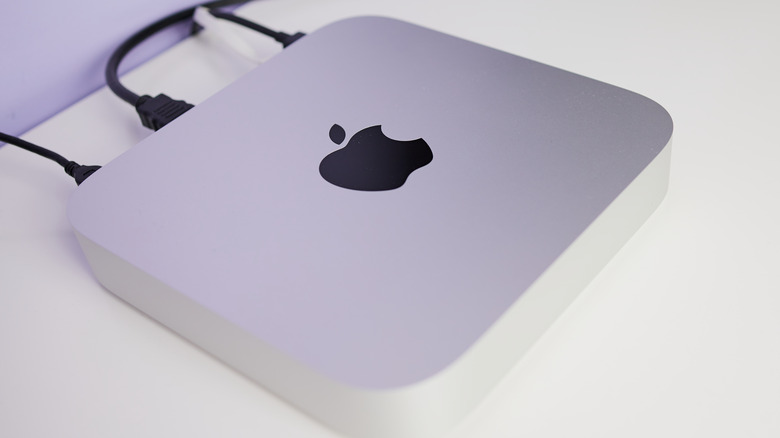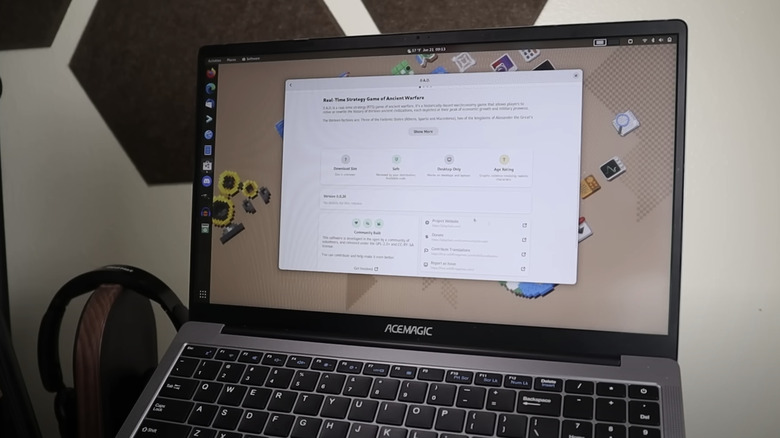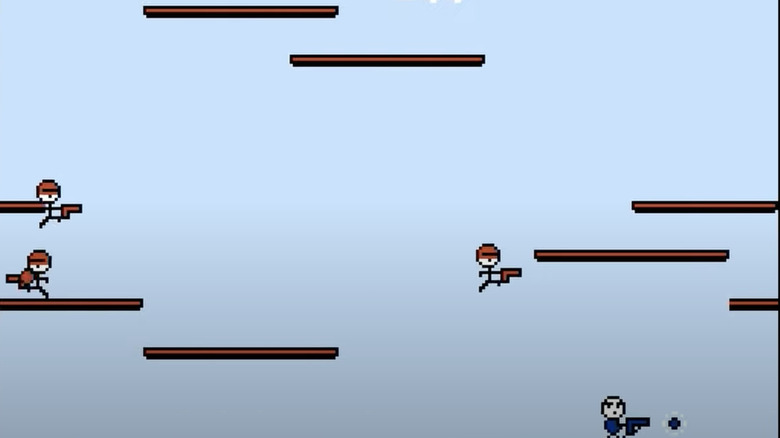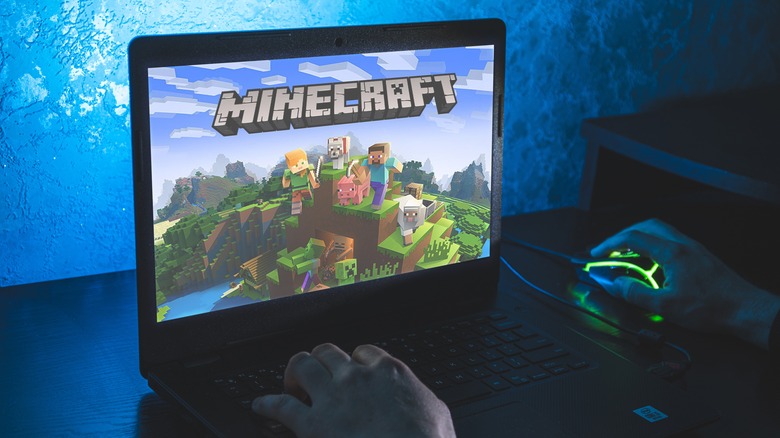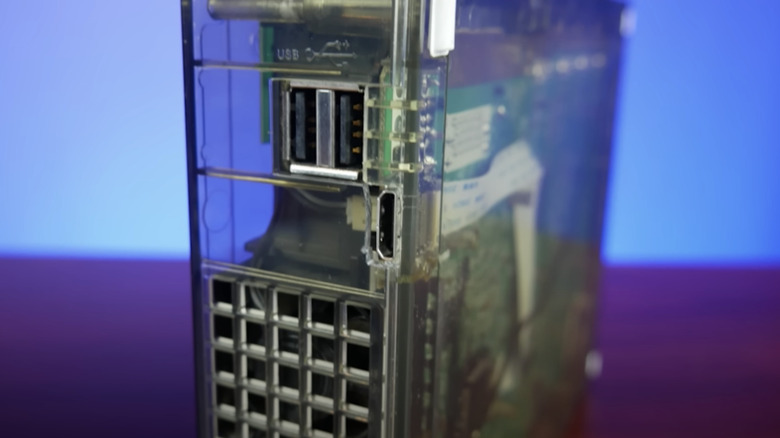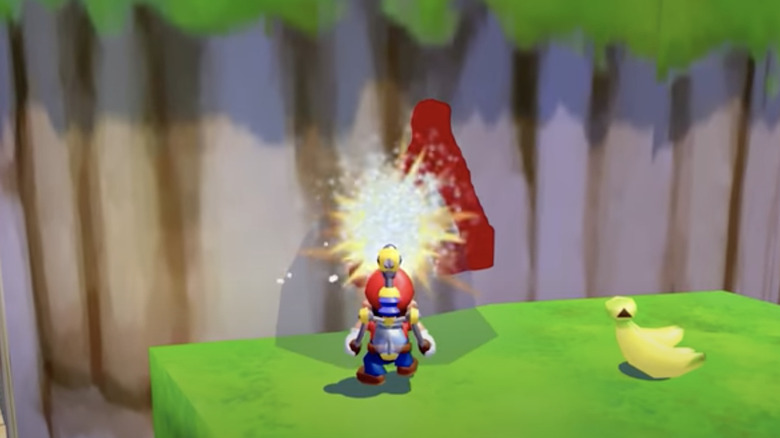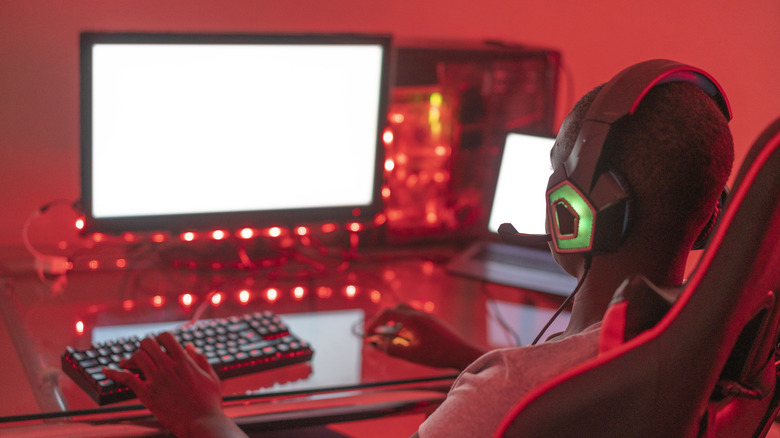Nine Of The Best Uses For An Old Nintendo Wii
With how much the world of video games has evolved over the last 15 years, revolutionary consoles like the original Nintendo Wii are often lost in the shuffle. The Wii, which hit store shelves in 2006, introduced a whole new dimension of interactive entertainment thanks to its innovative motion controls.
The system proved to be a boon for gamers from all walks of life, and settled in as Nintendo's best-selling home console until the Nintendo Switch came along in 2017 and surpassed it. Nintendo debuted the Wii U within the 11 years between the beginning of the Wii and Switch's life cycle, and while the Wii was received far more positively and became the preferred console for many, it still had to contend with the improved graphics of competitor brands like Microsoft and Sony.
As motion controls became more of a norm for home consoles rather than a feature, the Wii began to stand out less and less with time. The system eventually relegated itself to the shelves of most households with the Switch — Nintendo's best-selling home console of all time — on the market.
While its day in the sun has come and gone, the Wii still holds immense potential in some unconventional ways. Whether collecting dust in storage or tucked away in a forgotten corner of a living room, the Wii can be adapted and put to new use in some creative ways.
M1 Mac Mini Conversion
There is much more to the Nintendo Wii under the hood than what meets the untrained eye. One YouTuber, Luke Miani, put this theory to the test when he converted his 16-year-old Nintendo Wii console to an Apple Mac Mini. Granted, he wasn't able to get the Wii hardware to do something it was not meant to do. Rather, he simply noticed the Wii and latest model of the Mac Mini have similar dimensions, and simply moved the Mac Mini's internal components into a fresh, albeit older Nintendo Wii shell.
It should be noted such an experiment is not meant for beginners. Though the two devices share similar dimensions, the YouTuber had to shave down the top of the Wii's chassis so it could fit I/O ports where the Wii's controller connectors are. However, the ports made for a stellar fit once he did. He also needed to invest in a smaller 12 V fan, which is coincidentally the same size as the fan the original Wii came packed with. He also needed to find a new power supply, as the Mac Mini's 150 W power supply would not fit, and the Wii's power supply could not provide the necessary wattage. To combat this, he cut off the end of the Wii charger and connected it to a Microsoft Surface charger.
He ultimately utilized the new device primarily for emulation, though there are plenty of uses for a Mac Mini that go beyond emulating games.
Children's Media Center and DVD Player
Since the Wii originally released in 2006, many consumers who may have picked up the console at the time have likely gone on to have families, and may have small children in the house. Should this be the case, the Wii also makes for an ideal children's entertainment center thanks to its compatibility with WiiMC.
WiiMC is, essentially, a media center suite for the Wii, but requires the Wii's Homebrew Browser in order to access it. The program can browse media shared over a network, or natively on the Wii's SD card or an external USB hard drive. The program also turns the Wii into a DVD player, though this feature will not work on all models. Revised Wii models such as RVL-101 and RVL-201 (Wii Mini), released in 2011 and 2012 respectively, will not be able to run WiiMC without a mod chip.
Depending on the video format of the disc or file, the Wii is capable of playing video files up to 720p, the standard high-definition display at the time the console hit store shelves. The Wii also lacks 5.1 surround sound, but this likely will not matter to the untrained ear of a child. Considering the Wii's lack of portability, it will likely remain stationary next to a television or entertainment center, and therefore can serve as a capable waypoint for children to access their favorite shows and movies without having to mess up smart TV settings.
Wii Linux Conversion
While the M1 Mac Mini can work inside the shell of a Nintendo Switch, it is also possible for gamers to install alternative operating systems on the console hardware. Linux, which often plays third fiddle to Windows and Mac operating systems, is a viable option for gaming-focused users, like how it's utilized in the Valve Steam Deck portable console. Wii-Linux, like many applications that make use of the Wii beyond its known capabilities, can be installed by way of the Homebrew Channel. Users can choose from a variety of distributions, including Gentoo, Arch Linux, and Debian, just to name a few.
An alternative way to install Linux that may be preferable to some can be done through the BootMii exploit. BootMii is a system designed by Team Twiizers to enable complete low-level control of the Wii. The BootMii system hijacks the boot process before the normal "boot2" process is run, optionally allowing code to be run directly from the SD Card.
This has many advantages, such as making it very difficult to brick, and slowing Nintendo from blocking homebrew. Those who prefer alternatives to Linux should look to operating systems like FreeBSD, a free and open-source Unix-like operating system used to power modern servers, desktops, and embedded platforms.
Homebrew Games
Homebrew games, also known as fan-made games or indie games, are video games created by indie developers for use on various game consoles PCs, and mobile devices. These types of games are notable for being developed by "small shops" and fans typically outside the traditional gaming industry.
Homebrew games are not limited to a specific genre, and are rather often inspired by retro games and are designed to play on feelings of nostalgia. Nintendo Entertainment System (NES) games are typically the most popular platform for homebrew games, as the console's capabilities and limitations make for an easier time for players to create experiences reminiscent of games from the 8-bit era.
As a result, the Wii is a great choice for those looking to turn an old gaming console into a Homebrew center. The Wii has a Homebrew channel specifically related to Homebrew games that is still accessible through external means. This channel allows users to do things they normally could not do on their Wii, such as access fan-made games and easily download a slew of helpful third-party applications to the console.
Those looking to get their hands dirty with developing Homebrew games and applications will want to start by downloading a program called devkitPPC, followed by any other development tools they might need. The learning curve will vary for most, but there are plenty of tutorials on the web for Homebrew enthusiasts to take advantage of and take their Wii experience to the next level.
Strobe Alarm Clock
The Wii is also capable of hosting a unique alarm clock that will be helpful for those looking for an alternative way to wake up in the morning. The Strobe Alarm Clock combines features from both WiiStrobe and Alarmii, and can project an alarm clock on a full, bright screen.
Created by a Homebrew user known as "Mouse," the Strobe Alarm Clock not only flashes on the screen but rumbles the Wiimote. The app also features a font creator, allowing users to display the date and time on their screens in whatever font they please. Users must first convert their bmp files to 24-bit PNGs before utilizing this feature.
Those who experience epileptic symptoms are discouraged from using the strobe alarm clock. The app's flashing lights can trigger seizures for about three percent of people with epilepsy according to the Epilepsy Foundation, so users with any worries or reservations should look elsewhere. Additionally, those looking to use the app must have the Homebrew Channel installed on their Wii. Installing the application requires users to either copy the app's folder to the root of the Wii's SD card or copy the program's folder to the app's folder on the card.
Minecraft Server
Mojang Studios' 2011 hit "Minecraft" took the video game world by storm, but while the original Wii never saw a "Minecraft" release or spin-off (the Wii U did in 2016), it is possible for Wii owners to host a "Minecraft" server on their hardware. Moreover, there are multiple ways this can be done, as the Wii's hardware is strong enough to make Minecraft a reality on the console. Once Linux has been installed, users will then need to install the Java runtime environment before installing and configuring the server to their specifications.
The server can also exist on Raspberry Pi OS, but the easier way of playing the original Minecraft on an old Wii might be through the Wii's Homebrew channel. Users can download a program known as CavEX, a program designed to clone the functionality of a "Minecraft" client.
The app can be easily installed through the Homebrew browser, and once installed, players can join a world and jump right into their favorite block-based survival game. The Wiimote can be used as a controller for games in tandem with the Nunchuk, though multiplayer games are typically limited to under 10 players. Those rare households with multiple Wiis can also install a native version of the game known as "Wiicraft," a "Minecraft" clone currently in development.
Upgrade to Native HDMI support
The select few Nintendo Wii owners who know their way around a motherboard could always try their hand at upgrading the console. The most practical upgrade would arguably be adding hardware for native HDMI support, which uncaps the Wii's 480p limitations.
Similar to the Gamecube, the Wii made use of AV cables to transmit audio and video from the console to televisions. However, newer televisions no longer support RCA input, prompting third-party companies to release AV to HDMI converters that enable gamers to play previous-generation consoles, such as the Wii, on high-definition televisions. However, these adapters are not perfect, and could result in a faulty picture with lines running across the screen.
YouTuber Spawn Wave, who specializes in video game news content and console repair, recently applied native HDMI support to a Nintendo Wii with great success and relative ease. Such an upgrade will not be for everybody: Not everyone wants to deal with the hassle of opening up their Wii to solder in an HDMI port on the motherboard.
The most recent Mayflash adapter may be a sound alternative for those with modern televisions looking to take the shot. However, those looking to continue using their console to play their favorite GameCube and Wii games — but do not want the hassle of dumping their ROM files — should look to upgrade their consoles as soon as possible, so long as they have the capability and know-how.
Emulation Station
One alternative way gamers play their favorite games of yesteryear is through emulation. At a base level, emulation is the process of using alternative software to imitate, or "emulate" the behavior of a particular gaming console or system. Most emulation software is versatile in the devices it can be used on, allowing gamers to, for example, play their Gameboy Advance games on a smartphone.
There are plenty of reasons one might want to emulate their games, but perhaps the most important reason is to play games no longer commercially available, which has become an issue for companies like Nintendo that have slowly begun to remaster older games for modern hardware. Emulators also allow gamers to experience games with a fresh perspective. When paired with a high-end PC and monitor, the Dolphin Emulator can emulate 480p GameCube games at up to 4K resolution, giving preservation a new meaning.
The Wii's hardware capabilities make it a great option for emulation. The console is already backward compatible with GameCube games, and can also play a host of games from previous Nintendo, Sega, and TurboGrafx consoles. With a little tinkering, gamers can play their favorite games legally by dumping ROM images, before setting up emulators to emulate their favorite games at higher resolutions with cleaner graphics. As a result, the Wii is a great choice for fans of emulation, offering a versatile platform for playing games from various generations and consoles.
Remote PC Control
The Wii is also capable of being used as a remote PC thanks to another Homebrew application known as WiiVNC. The program has several uses, as there are many reasons why one would want remote control over their PC via the Nintendo Wii. The app can provide a more comfortable and accessible way to control a PC for some, and be used as a way to control a PC's media center without having to be in the same room.
WiiVNC can also be helpful for presentations, as it allows users to control their PC from a distance while displaying the content on a larger screen. Instead of being tied to the PC, presenters can use the Wiimote as a literal remote to navigate slides, videos, or other presentation materials.
Perhaps most notably, the Wii's ability to function as a remote PC is especially helpful to those with an eye on emulation. A WiiVNC emulation setup will allow players to run games off the PC while making use of the Wii's motion controls and unique peripherals. WiiVNC's functionality is not limited to just personal computers, however. The application can also cooperate with tablets and phones. The program can even act as a workaround for the Wii's lack of advanced modern resolutions, allowing users to stream their favorite movies and television shows at 1080p or higher through the Nintendo Wii.
